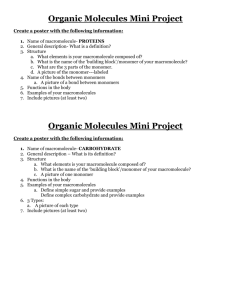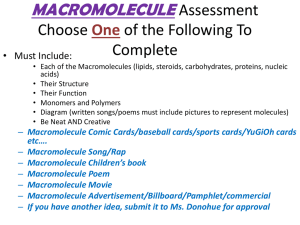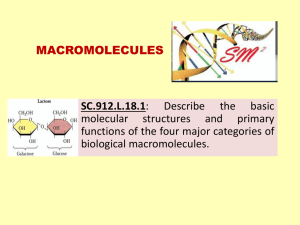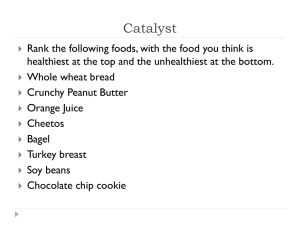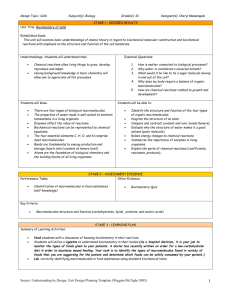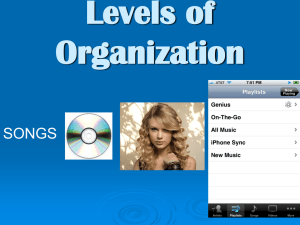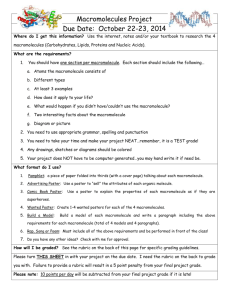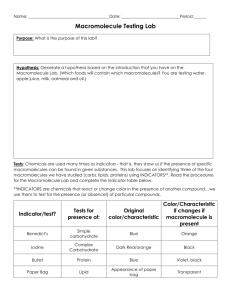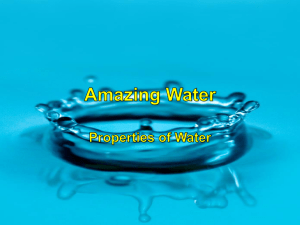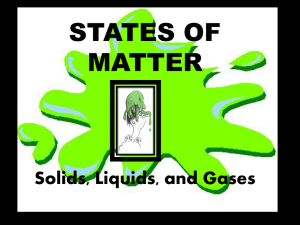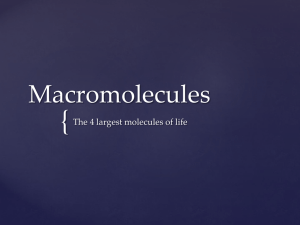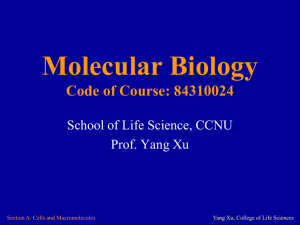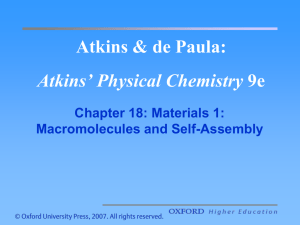Macromolecules - Science Math Master
advertisement
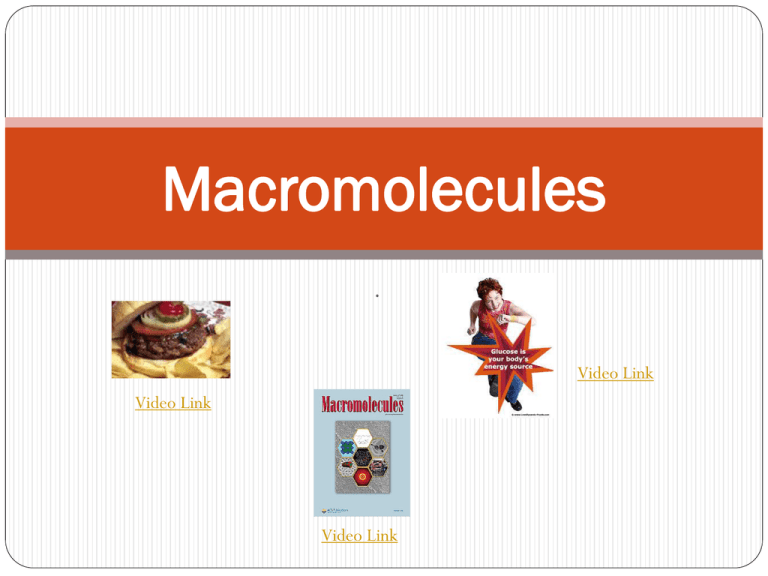
Macromolecules . Video Link Video Link Video Link Biology Standard SC.912.L.18.1 Subject Area: Science Grade: 9-12 Body of Knowledge: Life Science Standard: Matter and Energy Transformations A. All living things are composed of four basic categories of macromolecules and share the same basic needs for life. Common Misconceptions: Matter and Energy in Living Systems • • • • All organisms need food as a source of molecules that provide chemical energy and building materials. Plants make their own food in the form of sugar molecules from carbon dioxide molecules and water molecules. In the process of making sugar molecules, oxygen molecules are produced as well. All organisms, including plants and animals, have mechanisms for storing molecules from food for later use. All organisms need food as a source of molecules that provide chemical energy and building materials. -andPlants make their own food in the form of sugar molecules from carbon dioxide molecules and water molecules. In the process of making sugar molecules, oxygen molecules are produced as well. INTRODUCTION INTO ORGANIC COMPOUNDS • Brain Pop: Body Chemistry • Biology Junction Macromolecules PowerPoint • Macromolecule PowerPoint Notes • Macromolecule Virtual Webquest • McMush Lab • Macromolecules Virtual Lab • Matching the Macromolecules (Slides 7-10) Student Activities • Macromolecules Empty chart.doc • Macromolecules Completed Chart • Macromolecule Foldable • Macromolecule Virtual Webquest Lab: “Happy Meal -McMush!” • McMush Video • Macromolecules Virtual Lab • First, show students a McDonald’s Happy Meal … • Next, chop and blend the entire meal (drink included)… • Finally, have students follow the protocol for macromolecule identification…. Matching Macromolecule Activity • Accesses the students’ prior knowledge or used as a test review. • Make cards with the 4 types of macromolecules written on them for each group. • Create categories that you want the student to master such as structure, function, element ratio, food examples, etc. on another set of cards. • Have students work in groups to arrange a chart-like design on a table(variations: use large wall posted paper and posted notes, white boards and colored markers). Matching Macromolecule Activity continued • Have a bag or bin with descriptor cards of each macromolecule in each category( structure, function, example, element ratio for example) • Have student group members randomly select a card and try to match the information on the card with the correct macromolecule and under the correct category. • Example Carbohydrate- monomer monosaccharide- sugarglucose-CHO- 1:2:1 Matching Macromolecule Structures http://www.citejournal.org/tempcite/articles/v9i 2science1fig9.jpg Matching Macromolecules Game Cards Macromolecules Game Cards Return to Slide 4 Resources http://img.docstoccdn.com/thumb/orig/129341996.png Assessing student knowledge • Organic Molecule Flow Chart • Brain Pop: Body Chemistry Quiz • Macromolecules Review

